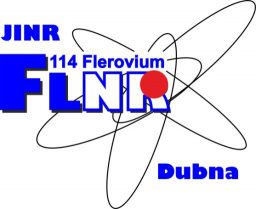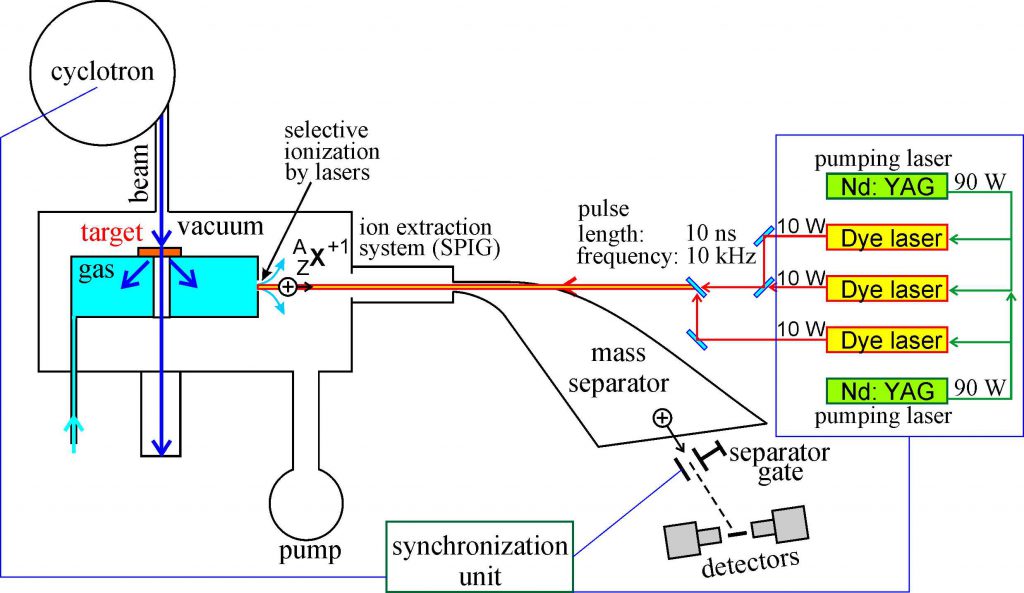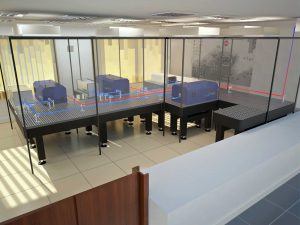Schematic view of the setup
GaLS – Setup for on-line separation of reaction products by selective laser ionization
The scheme of the setup for resonance laser ionisation of reaction products stopped in gas sell with subsequent transportation of them to detecting system is shown in Fig. 3. Neutron enriched isotopes of heavy nuclei are produced in the target in low energy (5 to 10 MeV/nucleon beam energy) multinucleon transfer reactions. The thin target of about 300 microgramm/sm2 is located at the entrance of the gas sell (or inside it). Reaction products are decelerated and neutralized after collisions with the atoms of buffer gas (pure Ar or He). Then the searched-for atoms with a given value of Z are ionised selectively by 2 or 3 step laser irradiation with appropriate wavelengths. These ions go out from the gas sell (along with other neutral atoms) into vacuum through the supersonic nozzle. In the vacuum volume the ions move over ion-guide system and mass separator to the detectors. Transport time is fast enough (milliseconds) to produce and study properties of rather long living beta(-) decayed neutron rich heavy nuclei.
Figure 3. Schematic view of setup for resonance laser ionisation of reaction products stopped in gas sell with subsequent transportation of them to detecting system.
3D view and allocation of the setup near experimental hall of the U-400M cyclotron of FLNR is shown in Fig. 4. Laser system of the setup consists of 2 pumping lasers Nd: YAG and 3 DYE lasers.
Figure 4. Allocation of the GaLS setup at the Flerov Laboratory is shown on the left panel and laser room is shown separately also on the right panel.



